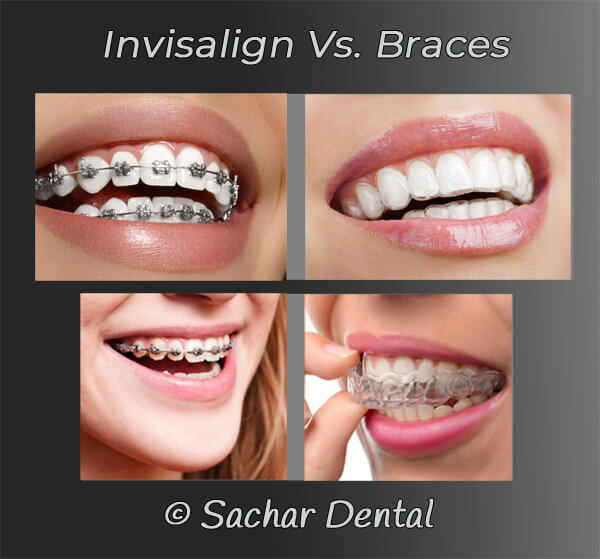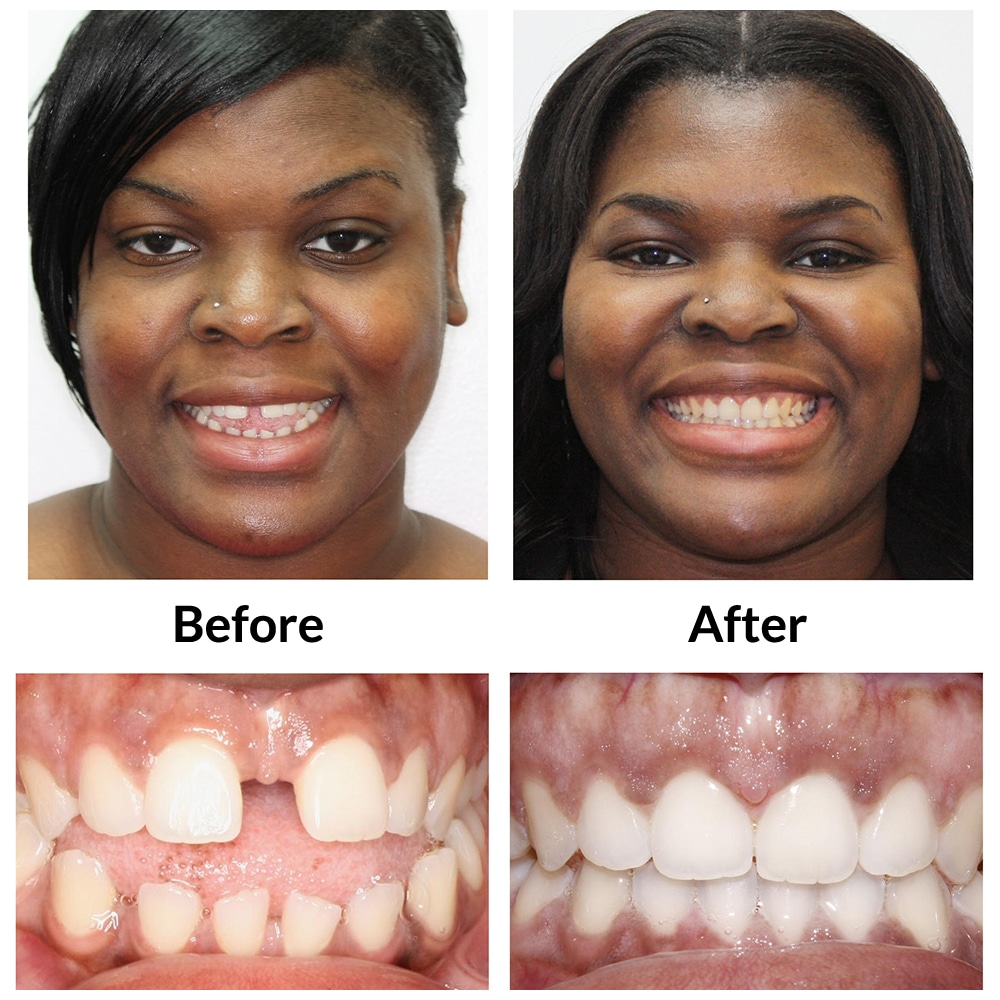What to Anticipate During Your Invisalign Journey: A Comprehensive Review
What to Anticipate During Your Invisalign Journey: A Comprehensive Review
Blog Article
Invisalign vs. Standard Braces: Which Option Is Right for You?
When considering orthodontic therapy, the choice in between Invisalign and conventional dental braces provides a number of vital aspects that merit cautious assessment. Invisalign supplies a very discreet option with detachable aligners, while typical dental braces supply a more noticeable yet effective solution for extreme imbalance. Each alternative encompasses distinctive advantages and disadvantages associated with visual appeals, convenience, therapy period, and expense. Understanding these subtleties is important for making a notified decision that aligns with your personal choices and way of living. The question remains: which choice will finest meet your orthodontic needs and assumptions?
Overview of Treatment Choices

On the other hand, conventional dental braces include steel brackets and cords that are bonded to the teeth. This technique uses constant pressure in time to accomplish positioning. While efficient for complicated orthodontic concerns, traditional dental braces call for normal gos to for changes and can position obstacles in preserving dental hygiene because of the difficulty of cleaning around braces and wires.
Both options have their benefits, and the choice usually hinges on particular oral problems, lifestyle preferences, and client conformity. Ultimately, getting in touch with an orthodontic specialist is critical for figuring out one of the most appropriate treatment plan customized to specific demands. Understanding the nuances of each alternative can considerably influence the general success of orthodontic therapy.
Visual Factors To Consider
A significant element influencing the selection between Invisalign and traditional braces is the aesthetic appeal each therapy provides. Invisalign aligners are crafted from clear plastic, making them practically undetectable when worn.
On the other hand, typical braces contain steel brackets and cords, which can be much more noticeable. While developments in orthodontic technology have actually caused the advancement of smaller braces and tinted elastics, standard braces still preserve an even more noticeable account. For some individuals, the visibility of dental braces may deter them from looking for necessary treatment.
Eventually, the choice in between Invisalign and standard dental braces may depend upon individual preferences pertaining to looks. Clients who prioritize discernment commonly favor Invisalign, while those that are less worried about exposure might go with conventional dental braces. Understanding the visual implications of each alternative is essential for making an educated choice that straightens with one's lifestyle and choices.
Comfort and Convenience

In terms of ease, Invisalign aligners are removable, enabling individuals to appreciate their preferred foods without restriction and keep ideal dental health. Brushing and flossing are streamlined, as the aligners can be gotten throughout these regimens, whereas traditional dental braces call for mindful maneuvering around braces and cables.
Additionally, Invisalign's progressive system permits for less orthodontic sees. Clients usually receive multiple sets of Your Domain Name aligners at once, which can streamline the treatment process and lower time spent in the orthodontist's chair. In comparison, typical braces demand regular modifications, making them less convenient for those with busy schedules. Invisalign. In general, the comfort and convenience of Invisalign make it an attractive option for lots of individuals seeking orthodontic therapy.
Treatment Period and Effectiveness
While both Invisalign and standard dental braces work in correcting oral imbalances, the duration over here of therapy can vary dramatically in between both alternatives. Normally, Invisalign therapy can take anywhere from 12 to 18 months, relying on the complexity of the instance. The clear aligners function by gradually changing teeth into their wanted positions, and normal follow-ups with an orthodontist aid make sure progression continues to be on track.
On the other hand, standard braces usually call for a longer dedication, generally ranging from 18 months to 3 years. This is due to their set nature and the usage of brackets and cords, which can be extra efficient for extreme misalignments and complicated situations (Invisalign). The treatment effectiveness of traditional dental braces is well-documented, as they enable for accurate changes and greater control over tooth motion
Inevitably, the choice in between Invisalign and conventional braces may pivot on both the anticipated therapy duration and the specific oral issues at hand. Consulting with an orthodontist is crucial, as they can give customized referrals based on individual requirements, making sure the selected approach aligns with wanted timeframes and results.
Cost Comparison and Insurance Options
Expense plays a substantial function in the decision-making procedure for individuals considering orthodontic treatment, whether going with Invisalign or conventional braces. Generally, the price of Invisalign arrays from $3,000 to $8,000, while traditional braces typically cost between $2,000 and $6,000. Variables affecting these prices consist of the intricacy of the case, the duration of treatment, and geographical place.
Many oral insurance policy plans provide partial coverage for orthodontic therapies, yet the specifics can vary commonly. Typically, traditional braces may be much more often covered by insurance coverage plans compared to Invisalign, which some insurers classify as an aesthetic treatment.
Additionally, several orthodontic techniques offer adaptable payment strategies, making both therapy options much more available. People need to ask concerning potential funding options and price cuts for in advance repayments. Examining the overall expense, consisting of insurance coverage advantages and settlement strategies, is necessary for making an informed choice that lines up with both visual Visit Your URL preferences and budget considerations.

Final Thought
In summary, the selection between Invisalign and standard braces pivots on several variables, consisting of aesthetic preferences, comfort, therapy duration, and price. Invisalign offers a very discreet, removable alternative that helps with dental health and nutritional versatility, while typical braces may be much more ideal for intricate oral concerns and typically come at a reduced price point. Inevitably, assessment with an orthodontist is vital to analyze private scenarios and establish the most appropriate treatment choice for achieving ideal dental positioning.
When considering orthodontic therapy, the selection between Invisalign and standard braces provides a number of vital elements that warrant careful analysis.Comparing Invisalign and typical dental braces exposes distinct therapy options for orthodontic improvement.While both Invisalign and traditional dental braces are reliable in fixing dental imbalances, the duration of treatment can differ significantly between the two alternatives.Expense plays a significant duty in the decision-making process for individuals considering orthodontic treatment, whether opting for Invisalign or traditional braces.In summary, the option in between Invisalign and traditional braces pivots on several aspects, consisting of aesthetic preferences, convenience, therapy period, and price.
Report this page